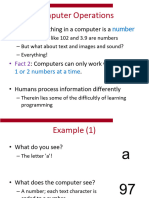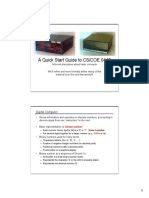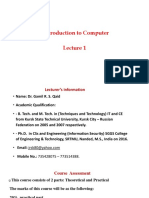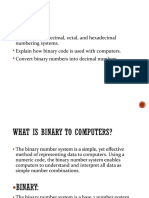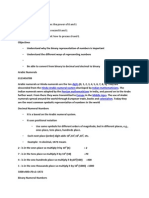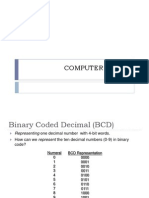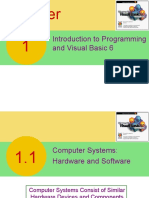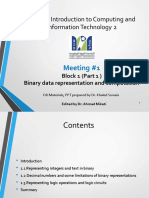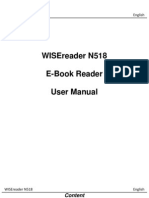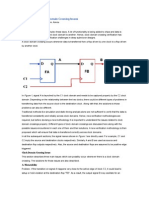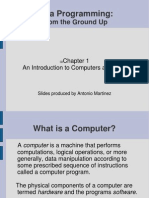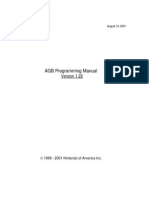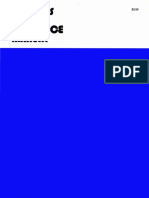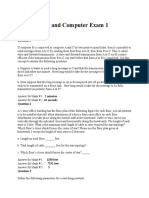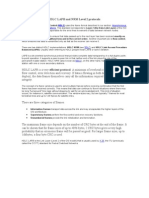0% found this document useful (0 votes)
196 views4 pagesBinary Keyboard Mouse Notes
The document explains how computers represent and store information using binary numbers. It discusses how binary uses a base-2 system with only 1s and 0s, compared to the base-10 decimal system humans typically use. It provides examples of representing decimal numbers in binary and vice versa. The document also explains how binary bit patterns are used to represent letters, words, and other data through coding systems like ASCII. Overall, the document outlines the fundamental concept of how computers encode all information - from numbers to text - using the binary numeral system of 1s and 0s.
Uploaded by
Ifat NixCopyright
© © All Rights Reserved
We take content rights seriously. If you suspect this is your content, claim it here.
Available Formats
Download as PDF, TXT or read online on Scribd
0% found this document useful (0 votes)
196 views4 pagesBinary Keyboard Mouse Notes
The document explains how computers represent and store information using binary numbers. It discusses how binary uses a base-2 system with only 1s and 0s, compared to the base-10 decimal system humans typically use. It provides examples of representing decimal numbers in binary and vice versa. The document also explains how binary bit patterns are used to represent letters, words, and other data through coding systems like ASCII. Overall, the document outlines the fundamental concept of how computers encode all information - from numbers to text - using the binary numeral system of 1s and 0s.
Uploaded by
Ifat NixCopyright
© © All Rights Reserved
We take content rights seriously. If you suspect this is your content, claim it here.
Available Formats
Download as PDF, TXT or read online on Scribd
/ 4
